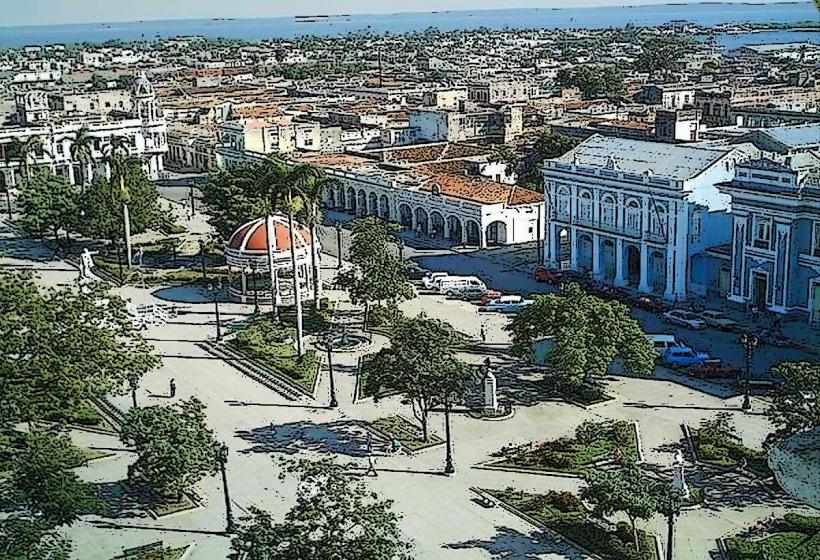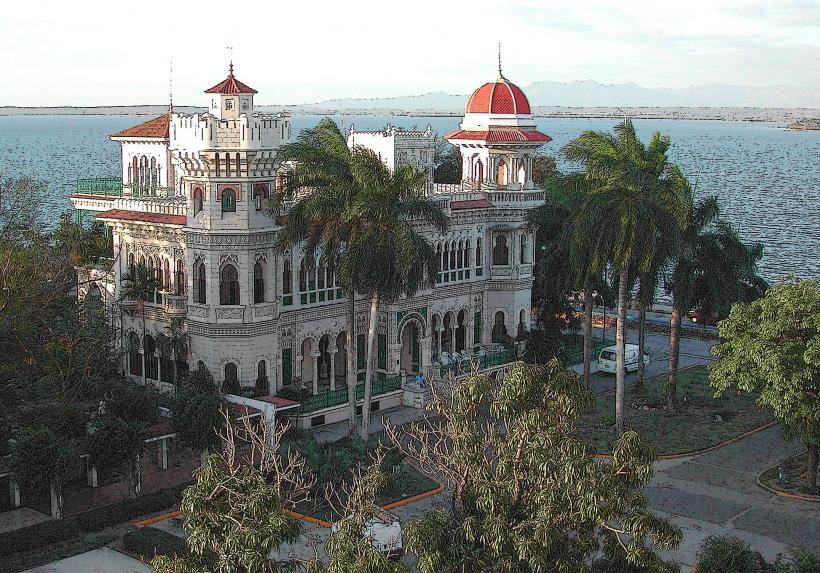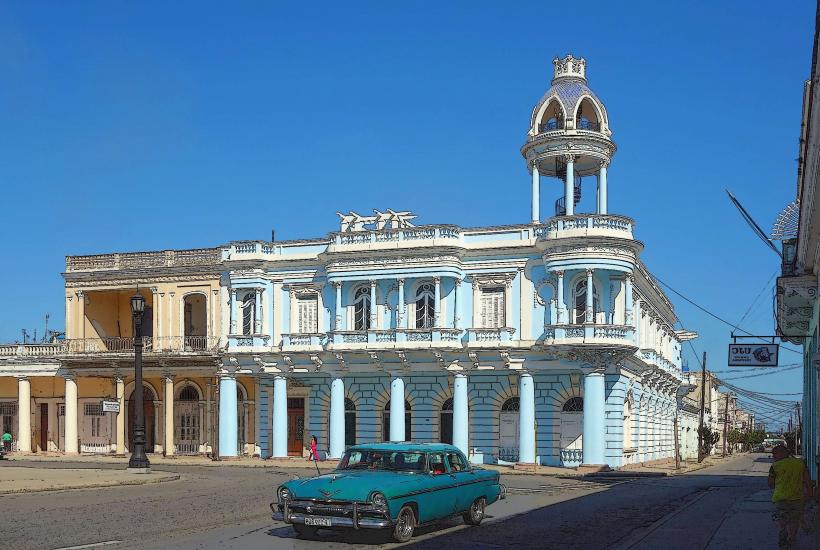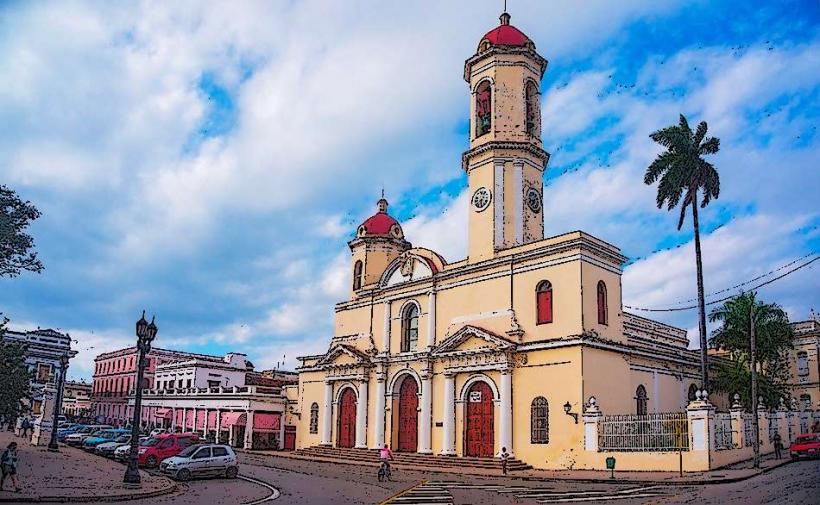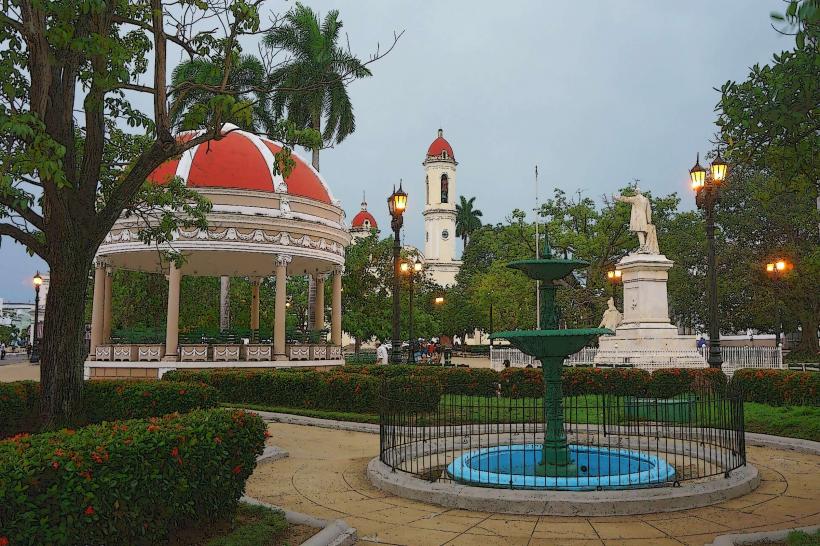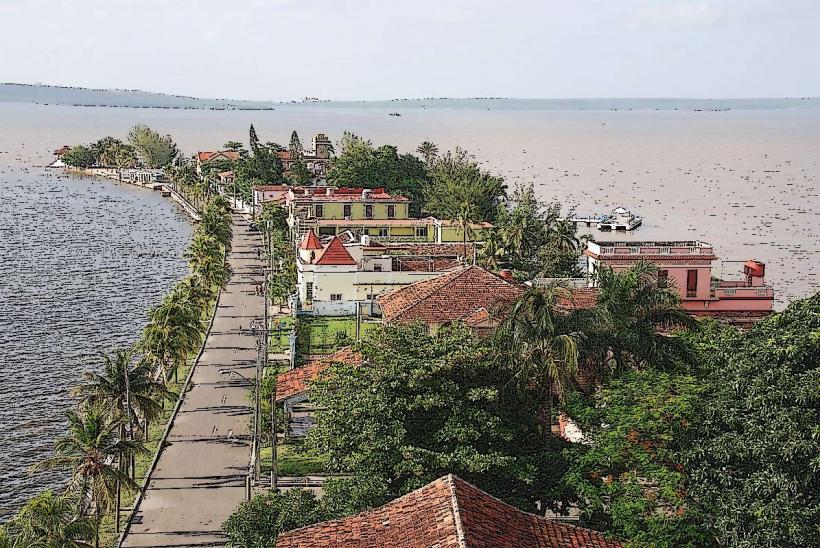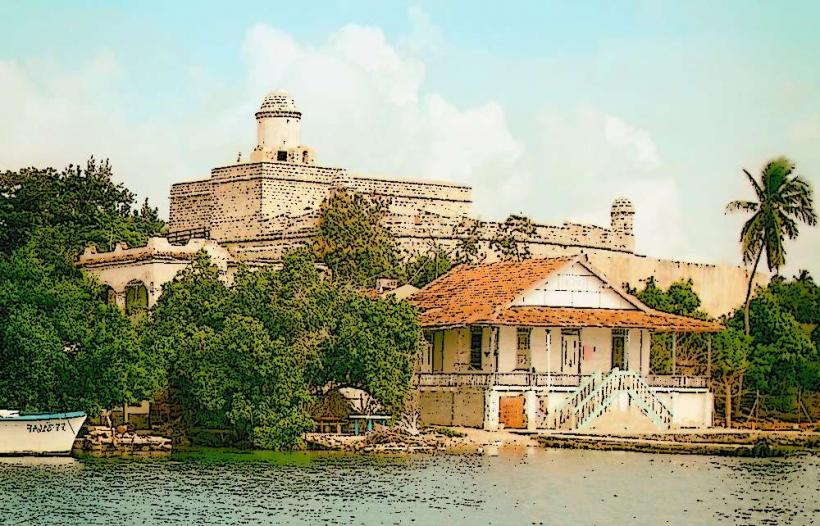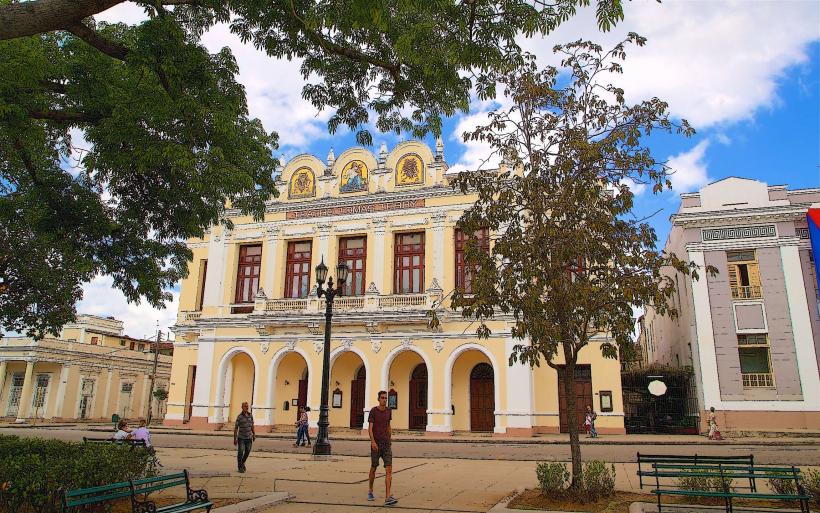Information
Landmark: Palacio de GobiernoCity: Cienfuegos
Country: Cuba
Continent: North America
The Palacio de Gobierno (Government Palace) in Cienfuegos, Cuba, is one of the city's most important historical buildings. It stands as a symbol of Cienfuegos' colonial and post-colonial heritage. Here’s a detailed look at this iconic structure:
Historical Background:
- Construction and Purpose: The Palacio de Gobierno was built in the late 19th century, around 1892. It served as the headquarters for the local government, housing the offices of the municipal government and various administrative functions. It has been a central figure in Cienfuegos’ civic life since its construction.
- Architectural Significance: The building is one of the finest examples of neoclassical architecture in Cienfuegos. Like many government buildings of the era, its design reflects the influence of European architectural styles, particularly those from France and Italy.
Architectural Features:
- Facade: The Palacio de Gobierno is characterized by a grand neoclassical facade, featuring symmetrical lines, large windows, and columns that emphasize its stateliness and importance. The building’s symmetrical design is a hallmark of classical architectural principles, lending it an air of formality and elegance.
- Columns and Portico: The main entrance to the palace is adorned with a large portico supported by columns. These columns are a classic feature of neoclassical design, evoking the architecture of ancient Greece and Rome.
- Balconies and Windows: The upper floors feature large windows and elegant wrought-iron balconies, adding to the building’s sophistication and lightness. These elements combine both practicality and aesthetic beauty.
- Roofline: The roofline features a central pediment, with decorative elements that enhance the building's classical grandeur. Above the main entrance, a clock is prominently displayed, adding both functionality and a sense of timelessness to the structure.
Interior:
- Grand Hall: Inside, the Palacio de Gobierno boasts high ceilings, marble floors, and well-preserved woodwork. The grand central hall and other spaces exude the refined elegance typical of governmental buildings from the colonial era.
- Decorative Details: The interior features rich, decorative details such as ornate moldings, intricate wood panels, and frescoes, showcasing the wealth and status of the building’s original purpose.
- Public and Administrative Spaces: The interior layout was designed to accommodate the administrative needs of the local government, with various offices and meeting rooms arranged around the central hall.
Cultural Significance:
- Civic Symbol: As the seat of local government, the Palacio de Gobierno represents the political and administrative heart of Cienfuegos. Over time, it has come to symbolize the city's history of governance, democracy, and civic pride.
- National Monument: The building is recognized as an architectural landmark and has been declared a National Monument, which preserves its historical value and ensures its continued importance to the city and the nation.
- Cultural Center: Today, the Palacio de Gobierno continues to serve as a hub of cultural activity. While it still houses some government offices, parts of the building are also used for cultural exhibitions and events, contributing to its ongoing relevance in Cienfuegos.
Visitor Experience:
- Guided Tours: The building is open to the public, and visitors can take guided tours to learn about its architectural details, history, and role in the political life of Cienfuegos. The tours are often led by knowledgeable staff who can provide insights into the building’s past and its function in the modern era.
- Cultural Exhibitions: The Palacio de Gobierno frequently hosts cultural exhibitions, events, and performances, making it a lively place for both locals and tourists. These activities are held in the elegant spaces within the palace, allowing visitors to experience a blend of history and contemporary Cuban culture.
- Photographic Opportunities: The grandeur of the building, with its neoclassical design and decorative details, makes it a popular subject for photography. Visitors often take the opportunity to capture the beauty of the facade and the historical context it represents.
Surrounding Area:
- Parque José Martí: The Palacio de Gobierno is located directly adjacent to Parque José Martí, the main square of Cienfuegos. This makes it part of the city’s vibrant center, where visitors can enjoy both the beauty of the palace and the lively atmosphere of the park.
- Nearby Landmarks: Other important landmarks, such as the Catedral de la Purísima Concepción and the Teatro Tomás Terry, are also within walking distance, making the Palacio de Gobierno an integral part of the city’s historical and cultural landscape.
Conclusion:
The Palacio de Gobierno in Cienfuegos is not only a masterpiece of neoclassical architecture but also a key part of the city's civic and cultural heritage. Its design, historical significance, and ongoing role in Cienfuegos’ public life make it a must-visit destination for anyone interested in Cuban history and architecture. The building stands as a proud reminder of Cienfuegos’ colonial past and its enduring role as a center of governance and culture.

